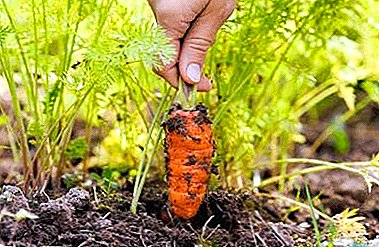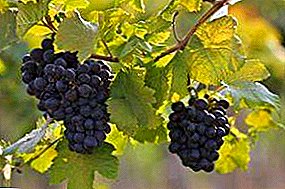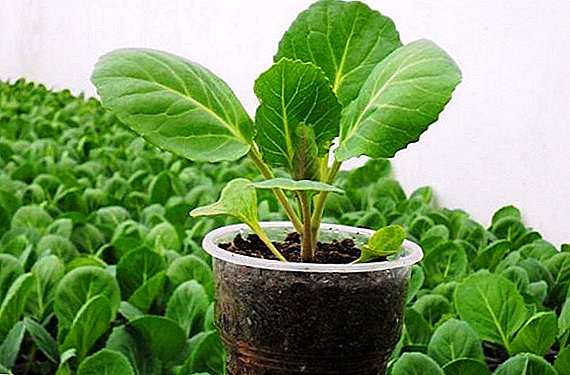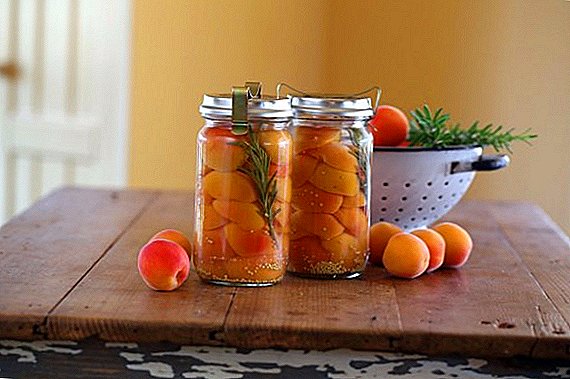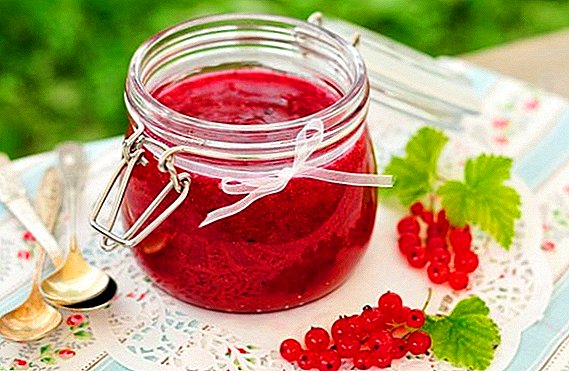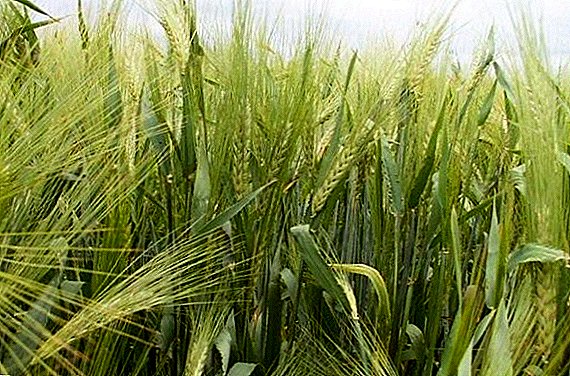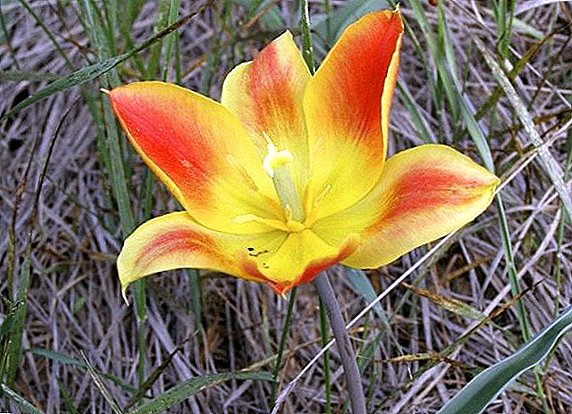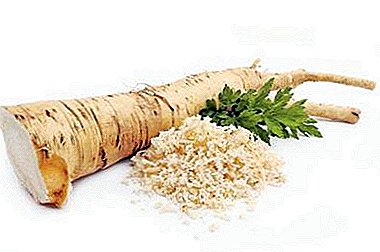
Horseradish is a common plant in almost all garden and garden plots. He does not need any care, he does not even need to be specially watered. This plant is not whimsical to various weather conditions. In food, as a rule, the grated root is used as a spicy seasoning, its juice and the root are used for the needs of medicine, and the housewives do not do without the spicy horseradish leaves during harvesting. Read in the article about the properties of the product, indications and contraindications for use and how to use it in the treatment of various diseases.
Botanical description
Horseradish is a powerful perennial herb that reaches a height of 40 to 120 cm during flowering.
- Root - thickened, many-headed, branched, fleshy, whitish. The diameter of the root is from 1.5 to 5 cm, and sometimes reaches a length of more than 100 cm.
- Stem - upright, all covered with small grooves. The height of the stem varies in the range of 50-150 cm. Its upper part is densely branched.
- Radical leaves - oblong-oval or oblong rather large size (30-60cm). Color dark green, sit on long petioles. The lower stem leaves are arranged on short stalks. Upper - oblong without petioles.
- Flowers - small, white color, the correct form with a four-part corolla. They concentrate on the upper part of the stem and its lateral branches. Inflorescences form a beautiful brush-panicles. The plant blooms from May to July.
- Fruit - dvuhgnezdnye pods oblong elliptical shape (4-6 mm long). In each nest 4 seeds are formed. The fruit ripening period is August-September.
Horseradish breeds vegetative way. Seed forms very little or does not form at all.
Chemical composition and nutritional value of the product
Plant rich:
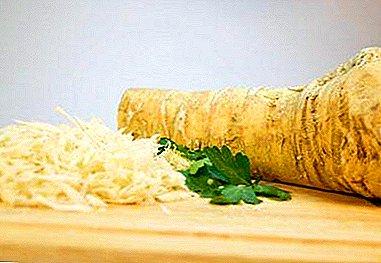 The salts of the following minerals: calcium, potassium, sodium, magnesium, phosphorus, sulfur. These substances are necessary for man for many biochemical reactions, namely - to activate a number of enzymes. And also for the normalization of blood pressure, and for the formation of muscles and bone system.
The salts of the following minerals: calcium, potassium, sodium, magnesium, phosphorus, sulfur. These substances are necessary for man for many biochemical reactions, namely - to activate a number of enzymes. And also for the normalization of blood pressure, and for the formation of muscles and bone system.- Vitamins of group B (folic acid, pyridoxine, thiamine, riboflavin). The roots also contain tocopherol (vitamin E) and ascorbic acid (vitamin C).
- The root composition contains: proteins, fats, carbohydrates, organic acids, dietary fibers, allyl essential oil. As well as starch, ash, saturated and unsaturated fatty acids.
- The root contains lysozyme, and it is a biologically active compound that is capable of adversely affecting the cells of many disease-producing cokes, including the tubercle bacillus (Koch's stick). Therefore, horseradish juice is a natural antibacterial agent.
Health benefits and harm
Consider the useful or harmful horseradish to health. Root treatment is possible due to the properties of horseradish. It is advisable to regularly eat it and treat it with rasenia if you have the following diseases:
- Inflammatory and cold diseases. The plant helps sputum from the bronchi.
- Gastric disorders, gastritis (low acidity).
- Cholecystitis, impaired function of the biliary tract.
- Difficult urination, stones in the kidneys and bladder.
- External use for toothache and stomatitis (rinsing).
- Blood formation organs - anemia.
- Physical and mental exhaustion.
- Bronchitis, pleurisy, bronchial asthma, tonsillitis, laryngitis, tuberculosis.
- Arthritis, sciatica.
- Low potency in men and gynecological problems in women.
- Regulates blood sugar.
Contraindications
 Eating a plant is contraindicated:
Eating a plant is contraindicated:
- in chronic and acute diseases of the digestive organs;
- also horseradish should not be included in your diet with a peptic ulcer, increased acidity;
- pregnancy;
- colitis;
- in inflammatory processes in the liver and kidneys;
- with individual intolerance.
Recipes for the preparation of therapeutic agents
Long since horseradish is used in folk medicine for the treatment of many diseases.
Gout
When treating gout, use leaves and roots of the plant, preferably fresh.. If this is not possible, you can take dried raw materials.
For medical use, dry root should be grated and steamed in water. Before using dry leaves, they are also poured boiling water. Fresh root should be rubbed outside or in a well-ventilated area.
Reference! Horseradish does not retain its properties for a long time, so prepared medicinal raw materials should be used immediately for its intended purpose.
Compress from fresh leaves
Freshly picked up leaflet should be doused with boiling water and applied to the sore joint (to the skin with the lower side of the leaflet). From above it is necessary to wrap with plastic, wrap and leave overnight.
Compress Root System
You need to take 2 tablespoons of crushed raw materials and pour 200 ml of boiling water over it. A piece of cotton fabric is placed in the broth, squeezed out of it, put the steamed root on it and put a compress on the sore joint.
Rubbing tincture
Recipe tincture: 150 g of gruel from the root pour 500 ml of alcohol and, stirring occasionally, draw for 24 hours. The resulting tincture rubbed sore spots.
Cough
For the treatment of cough using the root of the plant. Root is saturated with substances such as: micro and macronutrients, vitamins, phytoncides, lysozyme, essential oils that help eliminate cough.
With lemon from a lingering cough
 To prepare the medicine, you will need - 150 g horseradish and 2 lemons. It is necessary:
To prepare the medicine, you will need - 150 g horseradish and 2 lemons. It is necessary:
- Grate the root and squeeze the juice from the lemons.
- Next - mix both ingredients and put the mass in a glass dish, close it.
- After 12 hours, the filtered healing drug is ready for use.
- A slightly warmed mixture is taken on an empty stomach, 1 teaspoon once a day.
This tool should not be given to children.
Infusion with honey
Preparing the drug as follows:
- Take 200 g of horseradish and honey and half a liter of boiling water.
- Grind the root with a meat grinder, pour gruel with boiling water and leave in a dark place for a day.
- Then the filtered infusion is mixed with honey and heated to a slow fire to 50 degrees (the mixture should not boil in any case).
- The finished drug is stored in the refrigerator.
- The medicine should be taken 2 tablespoons no more than 3 times a day.
We invite you to watch the video on the preparation of tincture of horseradish and honey:
Rheumatism
For the treatment of rheumatism for the preparation of medicines use only the root.
- It must first be thoroughly washed, peeled and grated.
- From this mass it is necessary to squeeze the juice and dilute it with water in proportion: 1 teaspoon of juice to 0.5 cup of water.
Take the medicine for half a glass 3 times a day. Undiluted juice can not drink.
With elevated blood sugar
With the help of horseradish can reduce blood sugar levels. In this case, you need a root.
 It must be grated and mixed with sour milk in a ratio of 1:10 (kefir for this purpose will not work).
It must be grated and mixed with sour milk in a ratio of 1:10 (kefir for this purpose will not work).- All ingredients are mixed and left in a cool, dark place for 8-12 hours.
- The resulting medication is taken 3 times a day, 1 tablespoon for half an hour before meals.
The desired effect does not come immediately. Over time, tincture of horseradish with milk will help the pancreas to establish insulin production.
If there are no contraindications horseradish diabetes can be taken in its pure form. In this case, you should not replace the fresh product with the one that is sold in jars in a store. The effect will be only if you add to the salads, soups, casseroles young roots or leaflets. And also in the form of seasoning for meat dishes.
Important! When treating diabetes, horseradish should carefully listen to the signals of your body. The tool should not cause any side effects with the gastrointestinal tract and peristalsis.
How to store?
Only healthy and large roots are subject to long-term storage.
Methods for storing fresh horseradish:
- In the basement or cellar. This method can be used by residents of private houses or citizens who have an apartment on the ground floor with a basement. Before harvesting root crops for the winter, they need to be dried. Best of all rhizomes are stored in containers with sand. The temperature in the room should be from 0 to +5 degrees.
- Frost. Roots need to be washed well, peeled, cut into pieces of 5-7 cm in length and portioned into packets. Horseradish can be stored this way until the next harvest. The product does not lose its taste and useful qualities.
- Drying. Dry horseradish can be used only as a seasoning for pickles or as an additive to sauces. You can dry it in the air, in the oven, in a special dryer for vegetables.
We invite you to watch a video on how to save horseradish for a long time:


 The salts of the following minerals: calcium, potassium, sodium, magnesium, phosphorus, sulfur. These substances are necessary for man for many biochemical reactions, namely - to activate a number of enzymes. And also for the normalization of blood pressure, and for the formation of muscles and bone system.
The salts of the following minerals: calcium, potassium, sodium, magnesium, phosphorus, sulfur. These substances are necessary for man for many biochemical reactions, namely - to activate a number of enzymes. And also for the normalization of blood pressure, and for the formation of muscles and bone system. It must be grated and mixed with sour milk in a ratio of 1:10 (kefir for this purpose will not work).
It must be grated and mixed with sour milk in a ratio of 1:10 (kefir for this purpose will not work).
